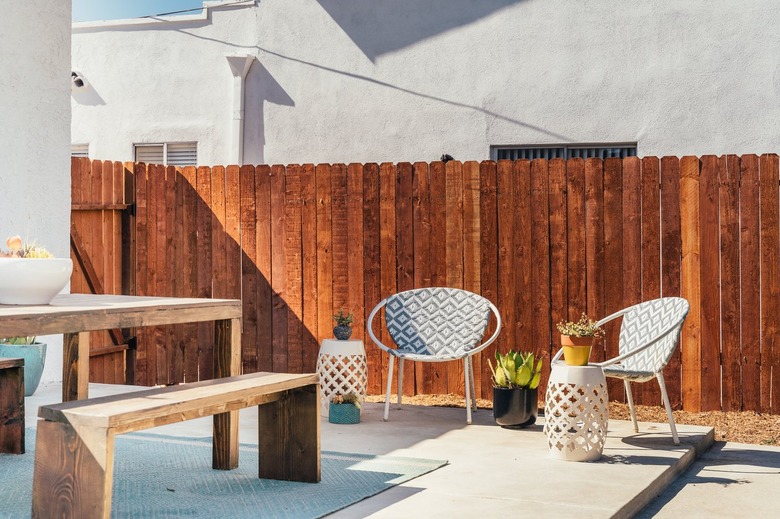How To Speed Up Concrete Drying
We may receive a commission on purchases made from links.
Pouring your own concrete can save money, but understanding how concrete works and how long it takes to dry is important for project success. Faster drying means you can enjoy your new concrete area sooner. However, concrete that dries too quickly can have issues, so you don't want to rush it too much. Following concrete best practices can give you the best of both worlds: fast drying without rushing the process.
How Long It Should Take
How Long It Should Take
Most concrete is dry enough for you to walk on it in 24 hours. Some types of concrete take longer, though, so read the packaging to determine how long you should wait. Some quick-drying concrete formulas have shorter drying times and allow you to walk on them within 10 to 12 hours.
Fully curing takes much longer. A week after pouring, the concrete should be at about 90 percent strength under ideal conditions. If you're pouring a concrete driveway, you should be able to drive on the concrete at this point. However, full curing typically takes 28 days. This is the point when the concrete reaches its full strength.
Don't Rush Curing
Don't Rush Curing
It's understandable that to want your concrete to dry quickly, so you can use it for its intended purpose. However, accelerated drying can cause issues with the concrete.
If it starts to dry soon after pouring, you might not be able to finish it properly since it loses its workability quickly. When concrete dries too quickly, it can become soft, chalky, weak, and unstable. It's generally less durable and lacks strength. It can also have internal issues and shrinkage cracks, especially if the top part dries much faster than the lower layer.
Choose Your Timing
Choose Your Timing
Environmental conditions have a major impact on how quickly the concrete dries. To harden, the water in the concrete has to evaporate. In high-humidity conditions, it takes longer for the concrete to release moisture. Air temperature is also a factor, with warm but not too hot air being ideal. If you pour concrete during a cold snap, expect it to take longer to dry.
For optimal concrete drying speed, time your project for optimal environmental conditions. It's best to schedule concrete projects when the temperature is forecast to fall between 60 and 80 degrees Fahrenheit. This gives you enough warmth for the concrete to dry appropriately.
Mix the Concrete Correctly
Mix the Concrete Correctly
When mixing concrete, always follow the product guidelines for adding water. Adding less water might make the concrete dry faster, but it won't have the structural integrity it needs to hold up well. Adding too much water can make the concrete dry more slowly than it should. Using warm water under normal conditions can help the concrete dry faster. If you're pouring concrete in hot conditions, using cold water can help slow down the process so it doesn't dry too fast.
Control Indoor Conditions
Control Indoor Conditions
If you're pouring concrete in an enclosed area, you can control the environment to improve the conditions. Keep the air warm, using heaters if necessary to maintain the ideal range. Circulating the air with fans, open windows, and your HVAC system also helps the concrete dry. If the humidity is high in the indoor space, use dehumidifiers to reduce the moisture in the air and speed up the drying process.
Consider Concrete Additive
Consider Concrete Additive
Adding calcium chloride to the concrete mix before you pour it into your prepared area can help speed up the curing process. Check on building codes and guidelines in your area as there are sometimes restrictions on how much calcium chloride you can add to the concrete.
